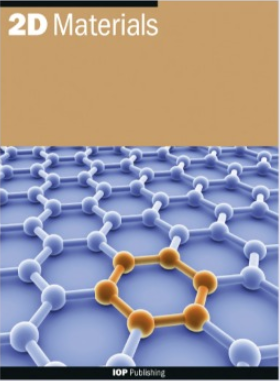Dielectrophoretic direct assembling of Mxene flakes at the level of screen-printed interdigitated microelectrodes and their evaluation in gas sensing applications
IF 4.3
3区 材料科学
Q2 MATERIALS SCIENCE, MULTIDISCIPLINARY
引用次数: 0
Abstract
Controlling, orientating, and assembling 2D materials is critical for their successful exploitation as active elements in various applications, particularly for sensors. Despite the increased interest in exploiting the properties of MXenes, to date, the direct dielectrophoretic assembly of this category of materials has not been reported. Thus, this work presents an experimental study on dielectrophoretic assembly of pristine MXene flakes at the level of screen-printed interdigitated microelectrodes. The development of MXene uniaxial ‘bridges’ across electrode micro-gaps can be controlled by convenient dielectrophoretic parameters such as voltage and frequency, which are thoroughly discussed. Moreover, appropriate frequencies for avoiding parasitic electrokinetic phenomena (AC electro-osmosis, electrothermal effect) that hamper the application of dielectrophoresis were identified. Finally, the proposed methodology for assembling MXene flakes demonstrates its feasibility of being used for development of chemiresistors as of satisfactory response of pristine MXene ‘bridges’ to ethanol atmosphere.在丝网印刷相互咬合微电极水平上直接组装 Mxene 薄片的压电电泳技术及其在气体传感应用中的评估
二维材料的控制、定向和组装是其在各种应用中成功用作活性元件(尤其是传感器)的关键。尽管人们对利用二氧杂环烯特性的兴趣日益浓厚,但迄今为止,这类材料的直接介电组装尚未见报道。因此,这项工作介绍了在丝网印刷相互咬合微电极水平上对原始 MXene 薄片进行介电组装的实验研究。MXene单轴 "桥 "在电极微间隙上的发展可以通过电压和频率等方便的介电参数来控制,本文对这些参数进行了深入讨论。此外,还确定了避免寄生电动现象(交流电渗、电热效应)的适当频率,这些现象阻碍了介电泳的应用。最后,由于原始 MXene "桥 "对乙醇环境的反应令人满意,因此所提出的组装 MXene 薄片的方法证明了其用于开发化学电阻器的可行性。
本文章由计算机程序翻译,如有差异,请以英文原文为准。
求助全文
约1分钟内获得全文
求助全文
来源期刊

2D Materials
MATERIALS SCIENCE, MULTIDISCIPLINARY-
CiteScore
10.70
自引率
5.50%
发文量
138
审稿时长
1.5 months
期刊介绍:
2D Materials is a multidisciplinary, electronic-only journal devoted to publishing fundamental and applied research of the highest quality and impact covering all aspects of graphene and related two-dimensional materials.
 求助内容:
求助内容: 应助结果提醒方式:
应助结果提醒方式:


